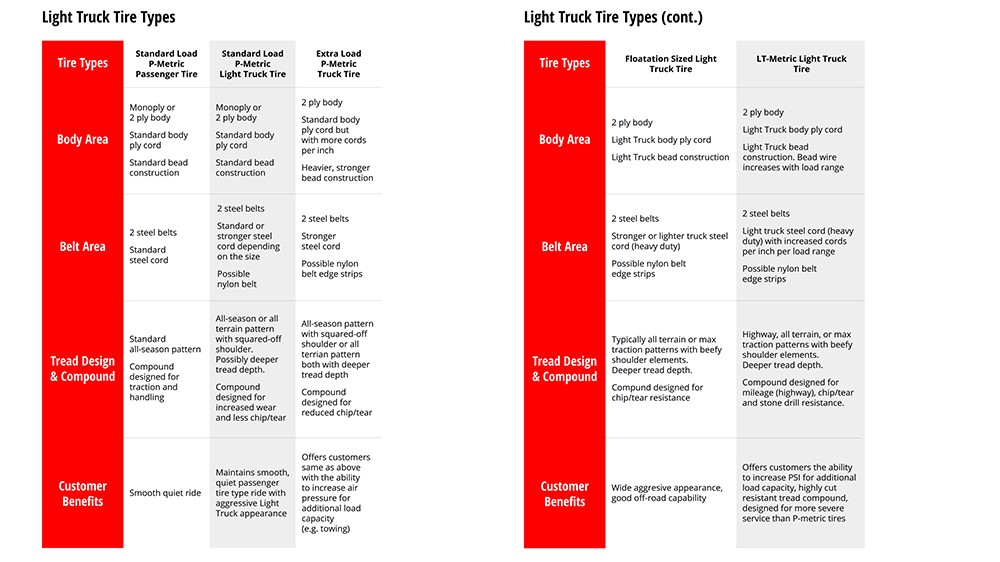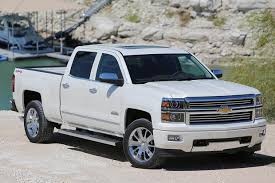Many pickups and SUVs (especially compact and ½ ton) will come with P-Metric or Euro-metric tires as original equipment. These tires are selected by the vehicle manufacturer to meet the load capacity of the vehicle and so an equivalent replacement tire of the same size, load capacity and speed rating is of course appropriate. However, in some cases it may be desirable to switch from a P-Metric or Euro-Metric to an LT-Metric or Flotation size tire. Some of the benefits to switching to an LT tire can include:
- Heavy-duty construction for bruise and impact resistance
- Tread rubber compound designed especially for cut and chip resistance
- All-Terrain and Max-Traction tires designed for off road traction
- Construction designed to improve handling while under heavy load
Notice that none of the benefits include increased load capacity. That is because no matter what tire you put on your truck, the vehicle itself has a load capacity that should not be exceeded.
There are some important points to consider before deciding to switch your pickup or SUV from P-Metric or Euro-Metric to an LT type tire (LT-Metric or Flotation).
- LT tires have different inflation pressure requirements and may require higher inflation pressure than your placard pressure to carry the same load as your original tires
- If your truck or SUV has a Tire Pressure Monitoring System (TPMS) installed you will need to work with your installer to determine if there are any special considerations regarding your inflation pressure and the service of the TPMS.
- 35 psi is the minimum recommended pressure for LT type tires
To determine the proper inflation pressure of LT tires on your vehicle use the following procedure:
- Determine the load capacity of the Original Equipment tire at the inflation pressure recommended on the tire placard by referring to the load and inflation tables.
- Divide the load capacity from step 1 by 1.1 to find the adjusted weight capacity for LT type tires.
- Locate the required load/pressure combination in the LT load and inflation tables that meets or exceeds the adjusted capacity of the passenger tire to be replaced.
Replacing LT-Metric/Euro-Metric Commercial (C-Type)
If your truck or SUV is ¾ or 1 ton capacity then it likely came from the factory with LT type tires. OE LT tires should never be replaced with passenger type tires, they do not have enough load capacity and are not designed to have the same load handling characteristics that your vehicle was intended for.
Also of consideration, if your vehicle has dual rear wheels, LT-Metric or C-Type tires should not be replaced with Flotation tires even if they are of equivalent physical size. Flotation tires are not intended for dual application and do not have dual load index stamping.
Trucks and SUVs tend to have a higher center of gravity than passenger cars. Ground clearance is important for trucks being driven off-road, and the only way to add clearance under the axles is to install taller tires. Designing the truck around taller tires results in a tall vehicle package and a higher center of gravity (with more body roll and load transfer), making the tires work harder, especially under braking and cornering situations and can make the vehicle less stable.










